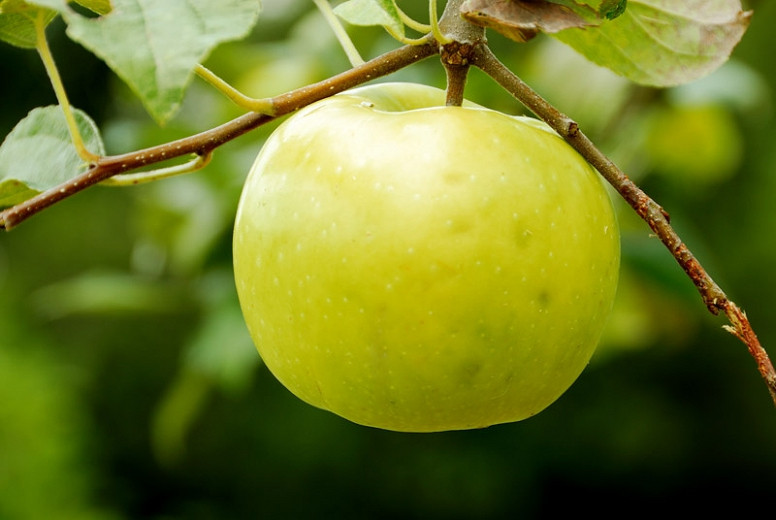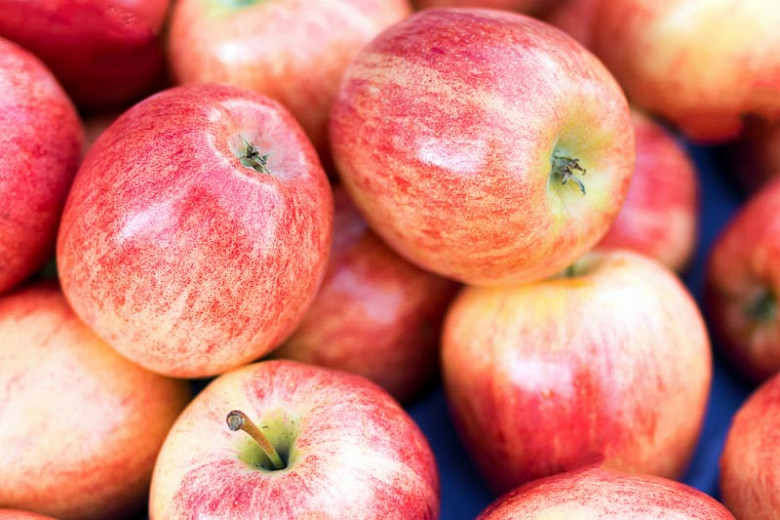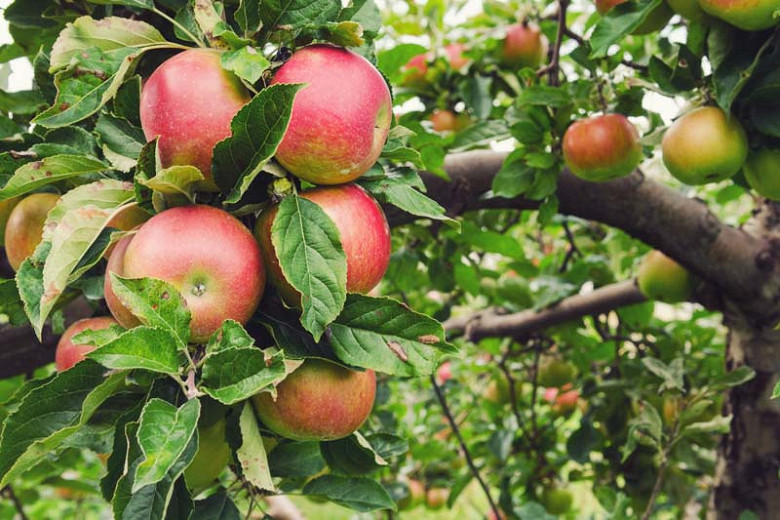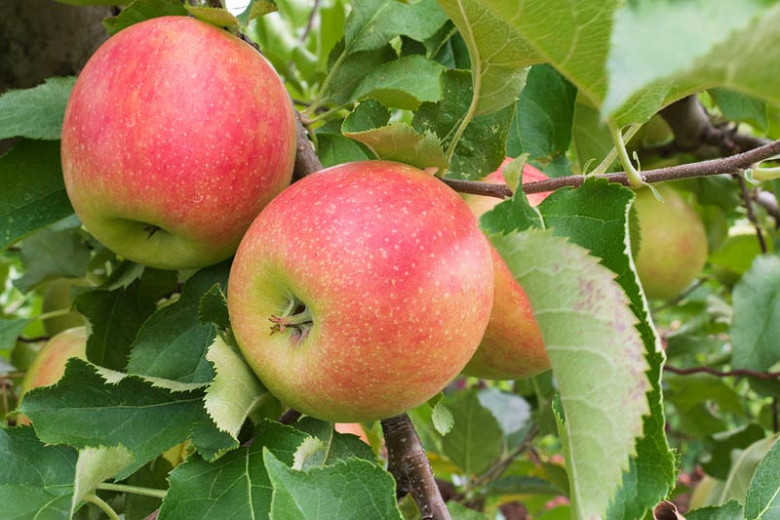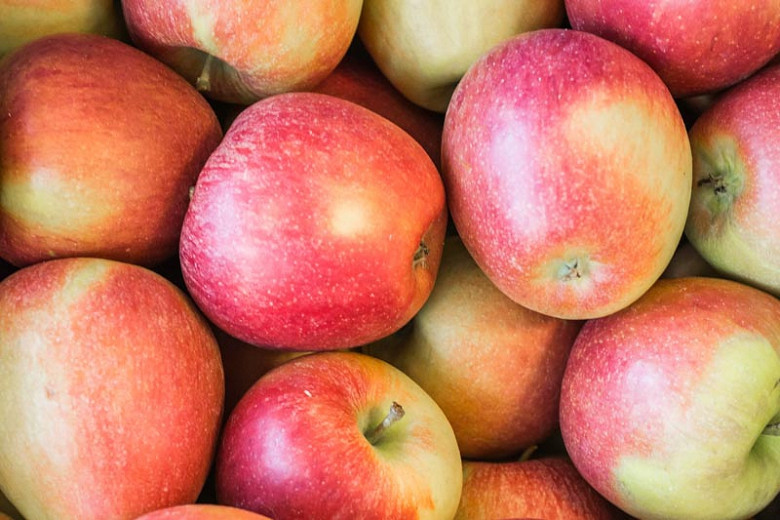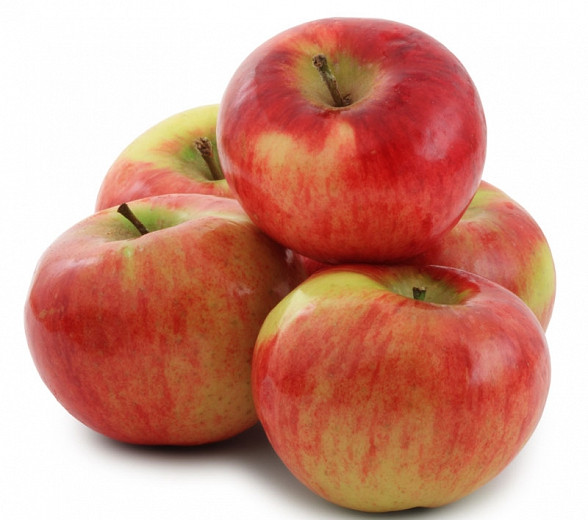Malus domestica McIntosh (Semi-Dwarf Apple)
A favorite in North America, Malus domestica 'McIntosh' is a culinary or dessert cultivar with a profusion of fragrant, pure white flowers in the early season (early-mid spring). Draped in clusters along the branches, they are truly a sight to behold. The flowers attract bees, butterflies, and hummingbirds. They are followed in the fall by an abundant crop of medium-sized, deep-red apples, sometimes adorned with a green blush. Juicy, tangy, McIntosh has a tender, white flesh. It is best used for snacking and applesauce, but some people enjoy its excellent tart flavor in pies as well. McIntosh is not self-fertile and requires pollination by a tree of another variety with the same bloom period, such as, such as Fuji, Braeburn, or Gala. Discovered in the early 19th century by John McIntosh, a farmer in Ontario, Canada, McIntosh is a fine choice for cooler climates and enjoys good disease resistance. Beautiful in bloom, heavy with luscious apples, and picturesque when old, apple trees are very rewarding additions to the landscape.
- Grows up to 12-15 ft. tall and wide (3-5 m).
- A full sun lover, this tree is easily grown in deep, loamy, moderately fertile, medium moisture, well-drained soils. Prefers a sheltered, frost-free position.
- Since edible apple cultivars do not grow well on their own roots, most varieties have been grafted onto rootstocks and are classified as dwarf (8-10 ft, 2-3 m), semi-dwarf (12-15 ft, 3-5 m) and standard (18-25 ft, 5-8 m). The fruit itself is full-size and not dwarfed. Dwarf or semi-dwarf apple trees offer some benefits: they produce fruit at an earlier age and are easier to manage (spray, prune and harvest).
- Apples should be pruned every year to get the best crop. They also need to be thinned to about 8 in. apart (20 cm) if you want to reap the best-quality fruit.
- This deciduous apple tree adds a charming presence, tucked into a shrub border or planted as a specimen.
- Keep an eye out for aphids, woolly aphid, rosy apple aphid, fruit tree red spider mite, mussel scale, codling moth, caterpillars, Apple scab, apple canker, powdery mildews, blossom wilt, and honey fungus.
- Propagate by chip budding or grafting onto a clonal rootstock for fruit.
Requirements
| Hardiness | 4 – 8 |
|---|---|
| Climate Zones | 2, 2A, 2B, 3, 3A, 3B, 14, 15, 16 |
| Plant Type | Fruit, Trees |
| Plant Family | Malus – Apples |
| Exposure | Full Sun |
| Season of Interest | Spring (Early,Mid,Late)Summer (Early,Mid,Late)Fall |
| Height | 12' – 15' (3.6m – 4.5m) |
| Spread | 12' – 15' (3.6m – 4.5m) |
| Water Needs | Average |
| Maintenance | High |
| Soil Type | Clay, Loam, Sand |
| Soil pH | Neutral |
| Soil Drainage | Moist but Well-Drained, Well-Drained |
| Characteristics | Fragrant, Showy, Fruit & Berries |
| Attracts | Bees, Birds, Butterflies, Hummingbirds |
| Garden Styles | Informal and Cottage |

